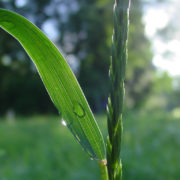An international team of experts is helping China reduce its reliance on harmful pesticides to fight crop pests and diseases including yellow rust fungal disease of wheat and locusts, the Centre for Agriculture and Bioscience International (CABI) said on Tuesday.
CABI, a not-for-profit organization headquartered in Britain, is working with researchers from institutes in countries such as China and Britain to push forward the project.
The team sought to develop a model to predict wheat rust spread and severity and map it thematically, a locust development model as well as locust maps, and a biopesticide efficiency model alongside a way of determining the effects of using chemical or biopesticides on non-target insects using the vertical looking radar.
“This project brought together cutting-edge research to provide pest and disease monitoring and forecast information, and encourage biopesticide use by integrating multi-source data to support decision making in the delivery of sustainable management of pests and diseases,” said Belinda Luke, a Principle Scientist in CABI’s Biopesticides Team.
The team has produced one book and 42 scientific papers and released 55 crop pest and disease monitoring and forecasting reports. 27 thematic maps have also been used by relevant institutes, according to Luke.
These reports are used to “warn farmers how severe the yellow wheat rust threat is in a particular year. This then allows farmers to decide if it is necessary or not to apply chemical fungicides to their wheat crops”, said Luke.
Source: Agropages
Image source: “Chinese flag” by Philip Jägenstedt is marked with CC BY 2.0.


